7th November 2022
For the 22nd event in our Sustainable Transport Futures seminar series in conjunction with the Festival of Social Science run by the Economic and Social Research Council (ESRC), we had presentations by Dr Gemma Bridge (Running Mayor of Leeds), Dr Stephen Parkes (Sheffield Hallam University), and Dr Justin Spinney (Cardiff University), chaired by Ian Cookson of the University of Salford
Introduction
Ian Cookson, Researcher at the University of Salford
So what is active travel and how do we talk about it? Here we have three different organisations that draw on different ideas of what active travel is. From the fitness angle in Sheffield City Council’s tweet, to Manchester City Council’s linking active travel and fun, and finally Bike is Best who draw on the Dutch model of functionality. We also have some organisations combing these ideas, or at least more than one. So that sets our stall out in terms of how active travel is discussed.
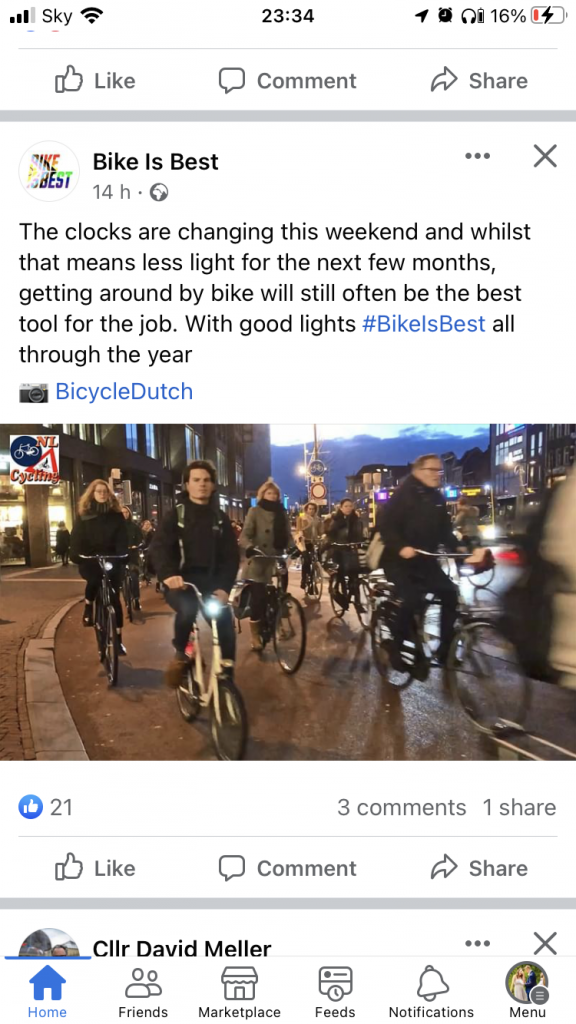
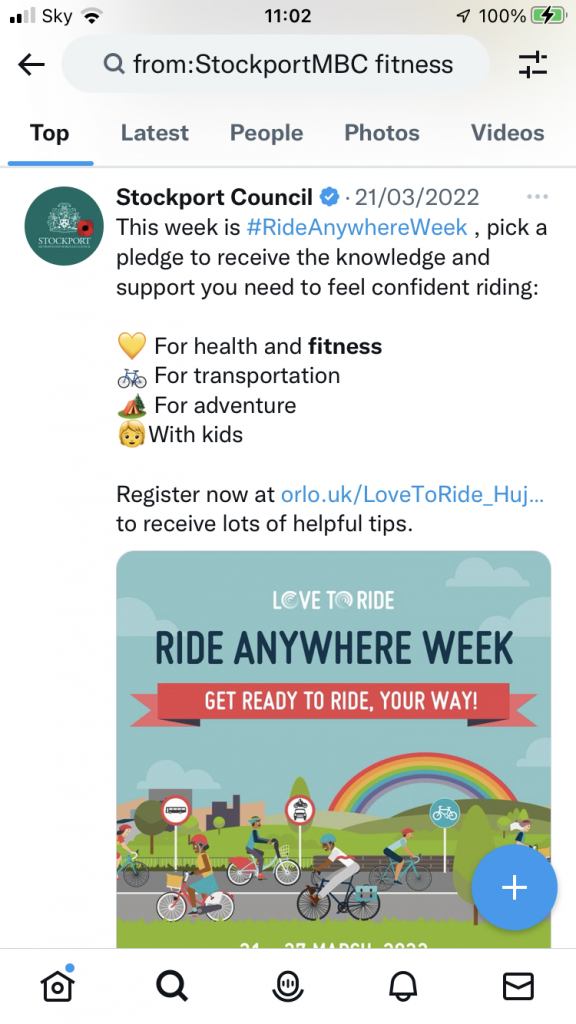
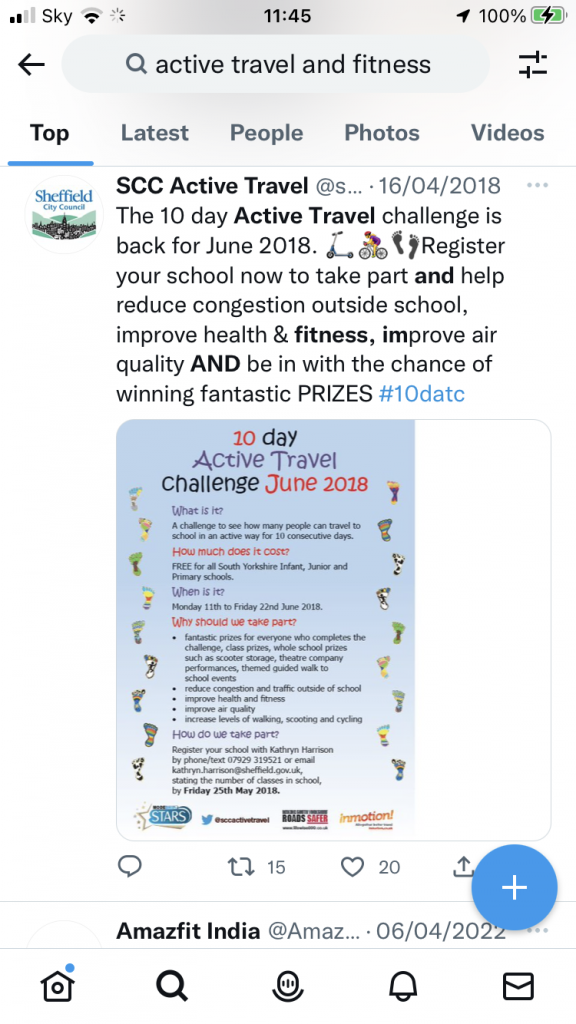
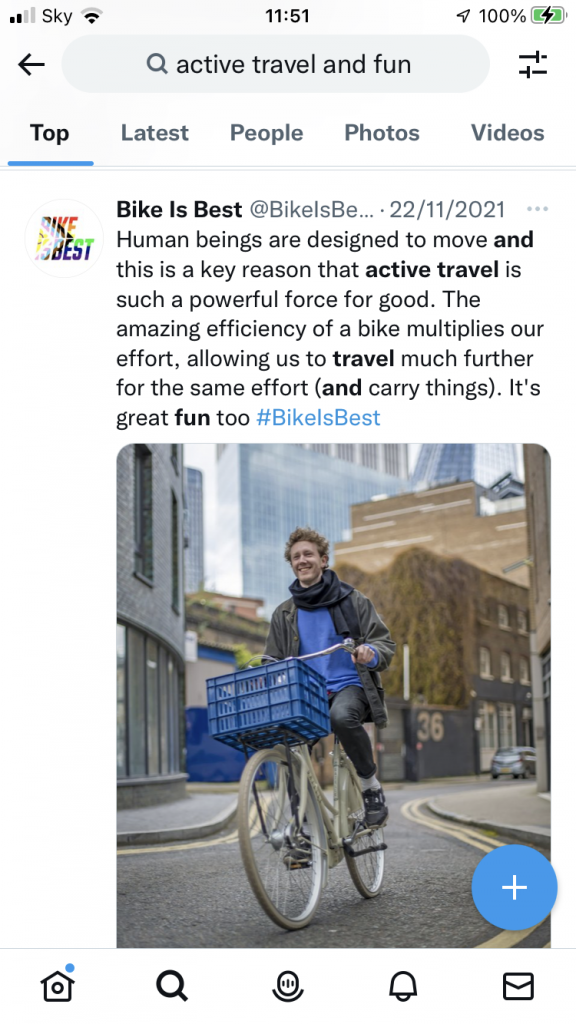
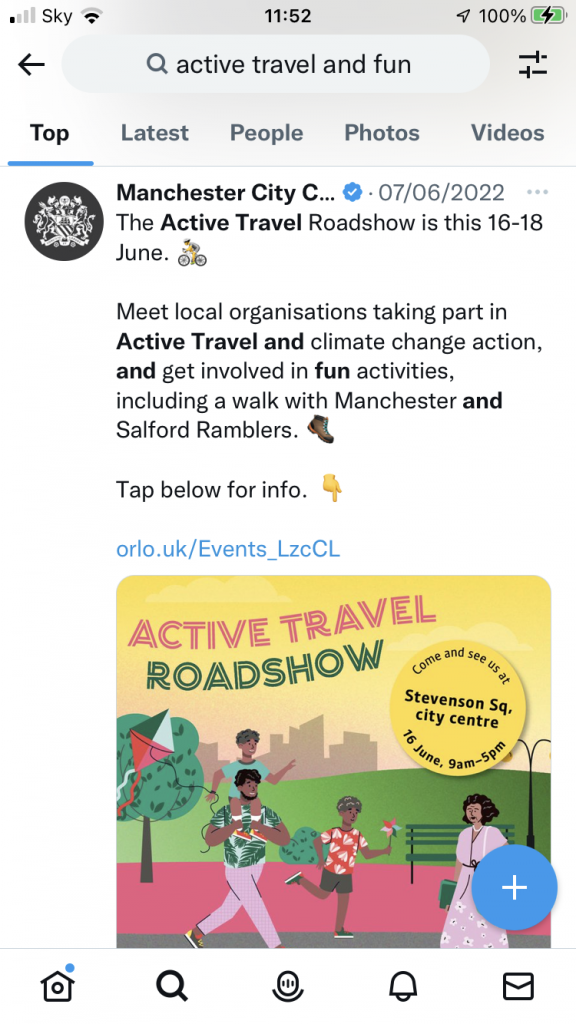
Promoting running as a form of travel – barriers and opportunities (4:51 – 11:17)
Dr Gemma Bridge, Running Mayor of Leeds
Gemma discussed running as a mode of travel as part of the work she has been involved in. This includes campainging with #Runsome and running the Mayors network: promoting running in her area, helping to create liveable places that promote fitness, mental health, and a cleaner environment. For Gemma diversity, inclusivity and safety are priority areas in the development of running as active travel. Running is not always mentioned in conversations on active travel and we should consider it as part of a diverse mix beyond just walking, wheeling and cycling. A key enabler is infrastructure that forms safe networks to promote inclusion in active travel. Gemma notes that pigeonholing running as something for sport and fitness will also inhibit participation, hence why she is keen to promote its utility.
Active travel can be all things, but safety is key (11:33 – 23:36)
Dr Stephen Parkes, Sheffield Hallam University
While Stephen agreed that active travel can be used for fitness and fun as well as being functional, there are lots of nuanced discussions around this idea. For Stephen it is highly individual and contextualised, primarily around perceptions of safety and this can exclude people from some backgrounds. For example, the image that one needs to be combative and aggressive to negotiate roads and infrastructure. Stephen asks if we should get the infrastructure right before we focus on the messaging? Additionally, policies are often distilled down to car vs bike. This focuses on the low-carbon arguments and misses much of the sociality of active travel. For example GPs can prescribe active travel to enable people to be more active in daily life through social prescribing. There is also an issue with our methodologies around active travel, which often focus on surveys and are therefore problematic when they do not look beyond commuting and leisure in considering journey purposes.
Framing Active travel (24:14 – 34:55)
Dr Justin Spinney, Cardiff University
Justin began his presentation with a discussion around the framing of active travel. For him, active travel is a policy agenda and academics have a role to play in shaping ideas and the thinking around the topic. Justin draws a comparison with music, as it has an identity, a community, and provides a sense of belonging. While it does have an industry that provides economic growth, that isn’t why the public buy or listen to music. Cycling is similar. As children, cycling is about fun and freedom not economic growth. Therefore, intrinsic benefits are a key element of cycling. However, the promotion of cycling has been instrumentalised as a policy tool, which focusses on ensuring we as citizens are productive and less of a burden on society. Infrastructure has certain affordances built in for fast solo commuters (speed and efficiency in cycle lanes which are straight and direct), rather than ‘slowness’, and therefore recreational cycling seems to have no place. BMX tracks are different as they promote fun and exhilaration, rather than saving money and time. Using cycling to fit into gaps the of automobility is something we could be moving away from, to a set of different values around the personal and community.
Q&A (35:00 – 1:30:55)
Due to the volume of questions and the length of the discussion, here we capture the general themes of the Q&A that the panel considered.
We should consider facilities alongside infrastructure, and the infrastructure needs to provide for all and address both road and social safety.
Political will is integral, and policy around active travel should move away from economic growth.
Active travel as a definition is possibly too abstract. It should be broader and reflect the spectrum of non-automotive mobility.
Promotion – the question that prompted this discussion. The car has to look unattractive as a transport option and how we talk about active travel should be around liveable cities, healthy streets, and include walking, running and multi-modal journeys.
Comments Off on Seminar #22 – Fitness, Fun and Functional